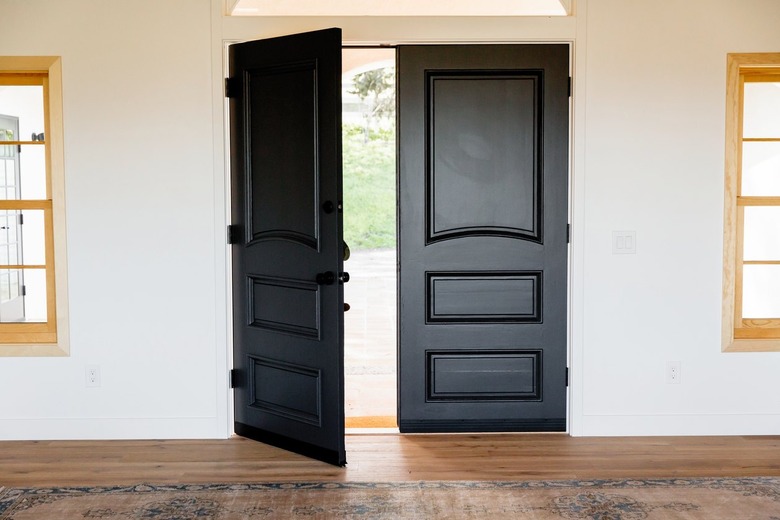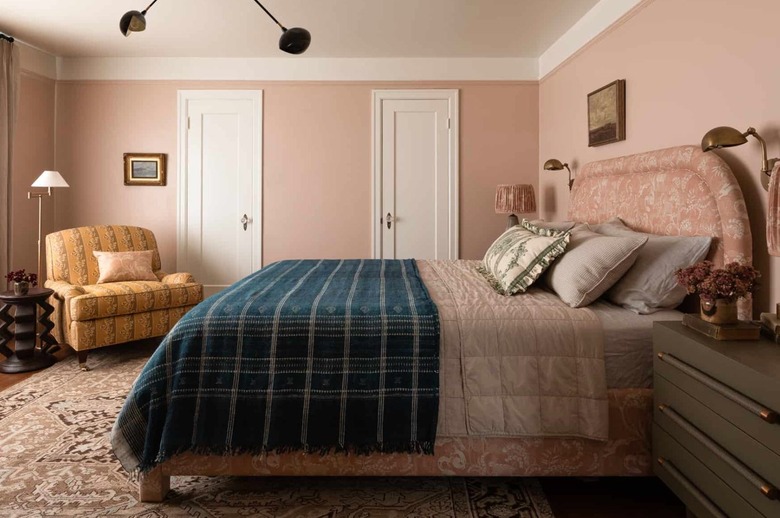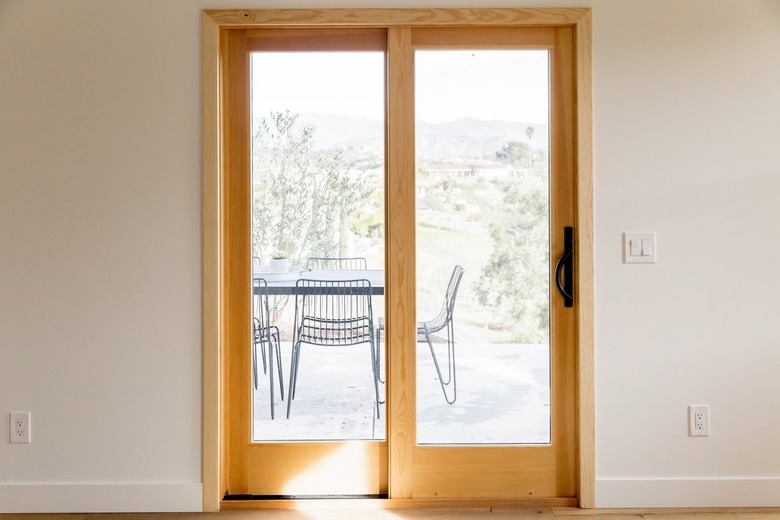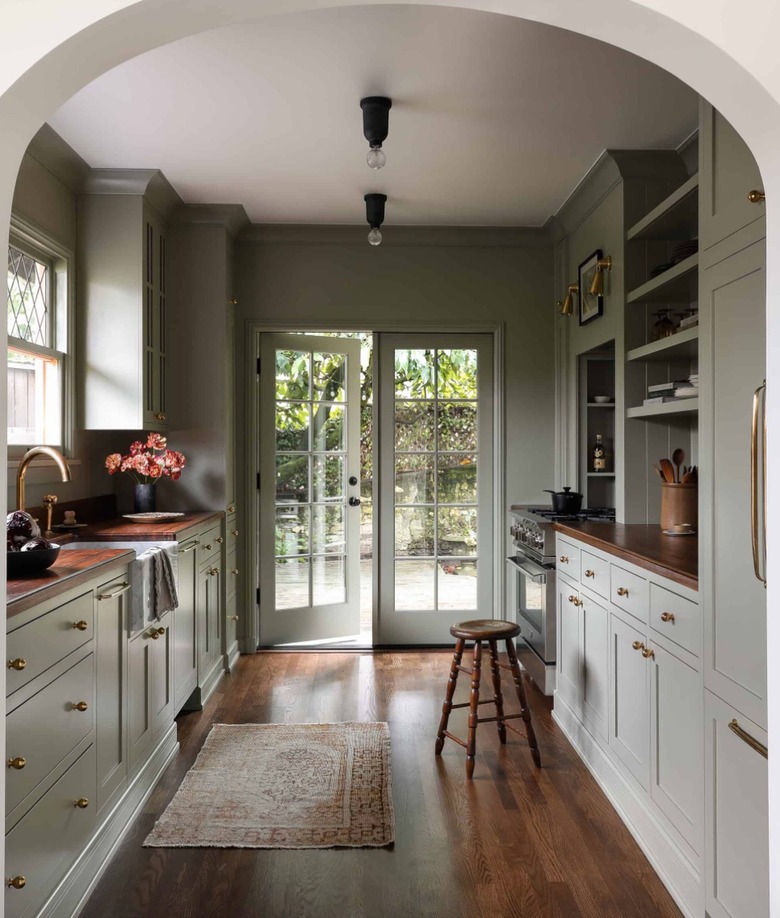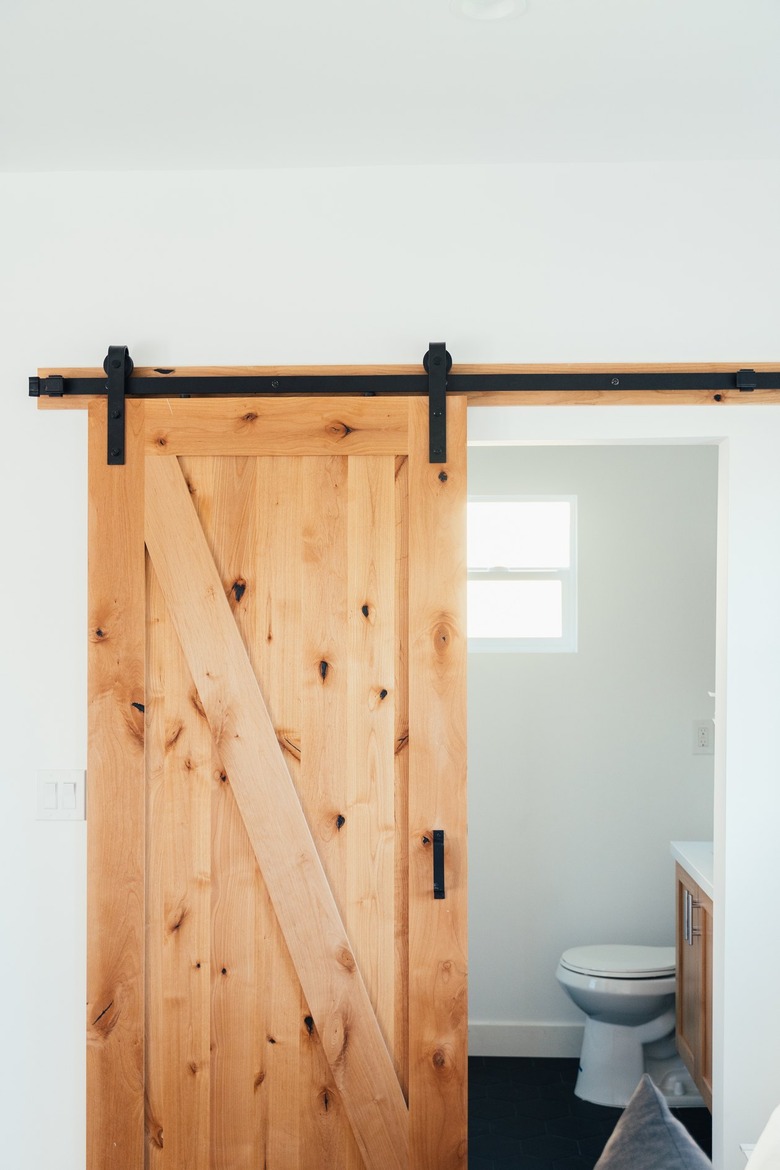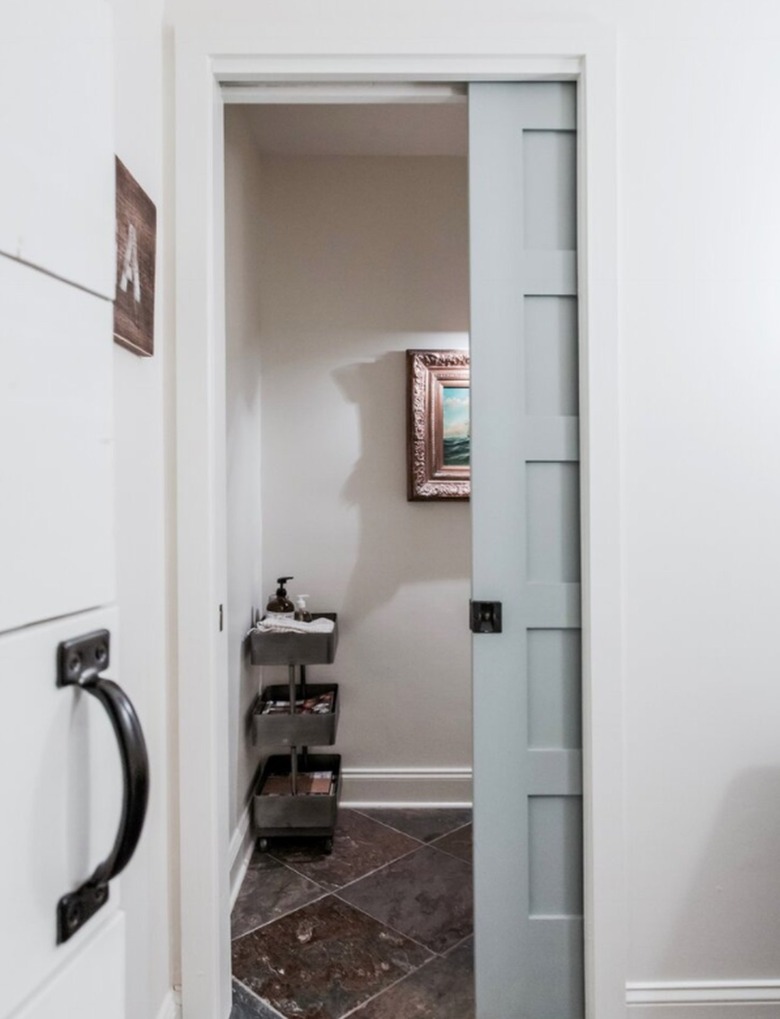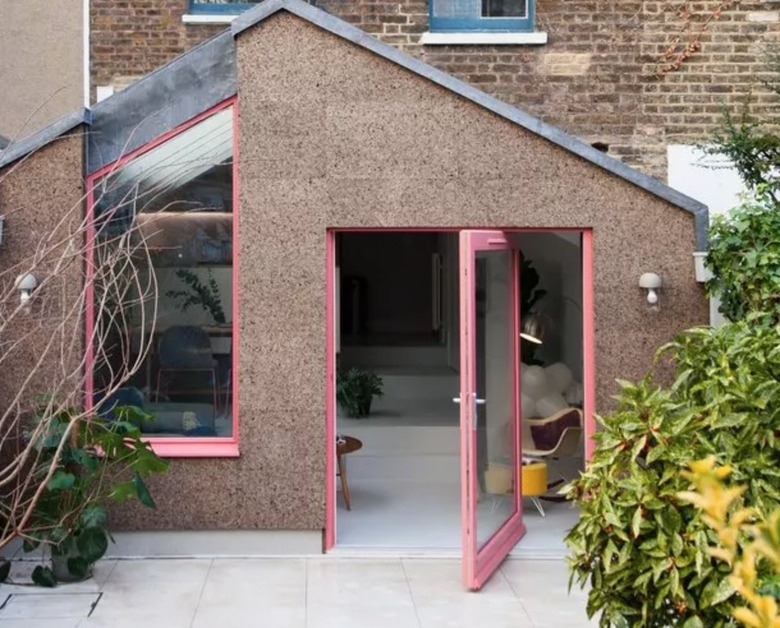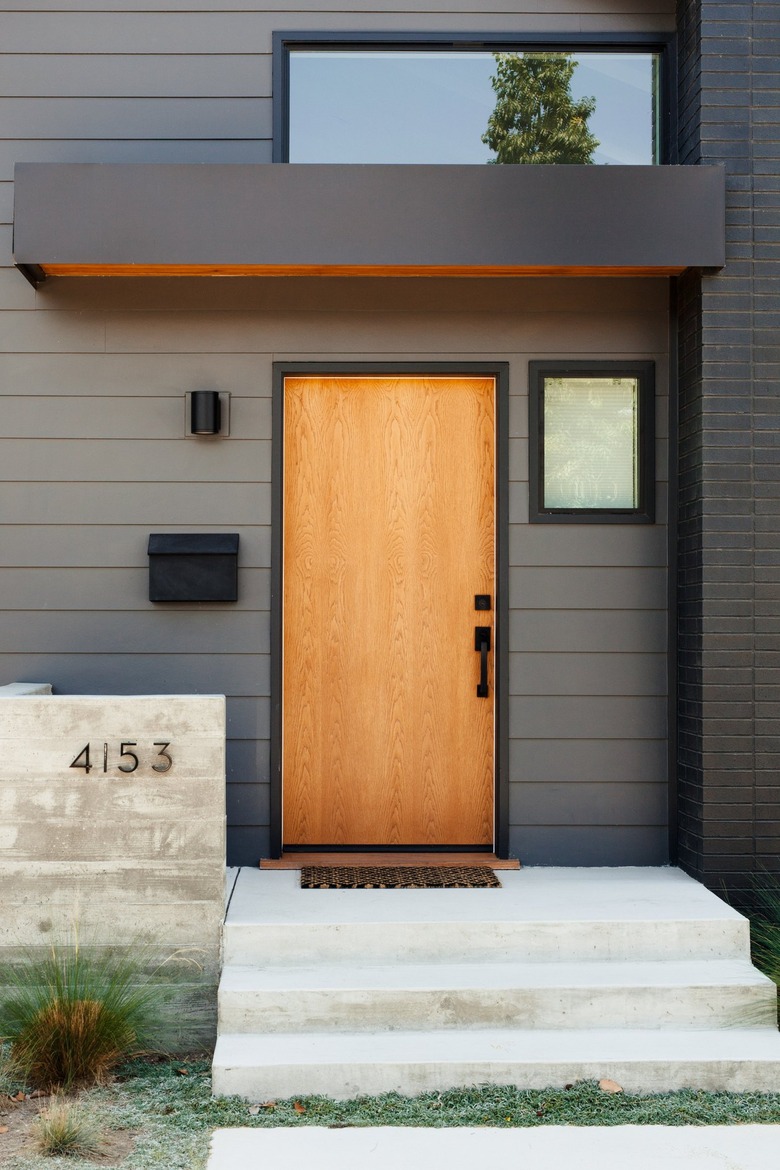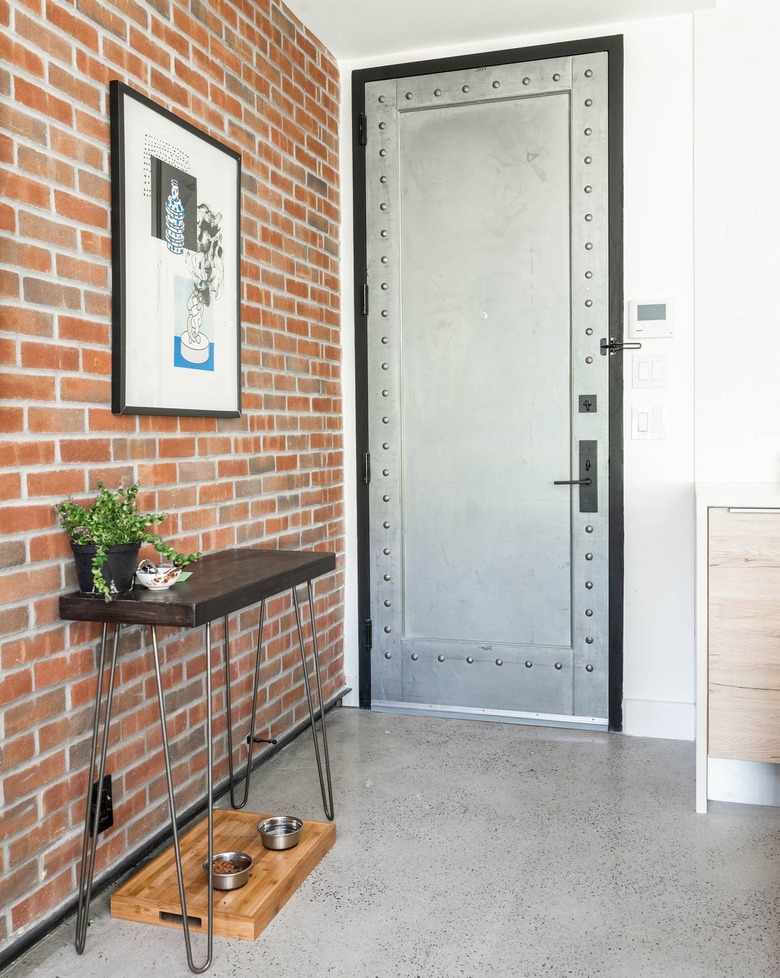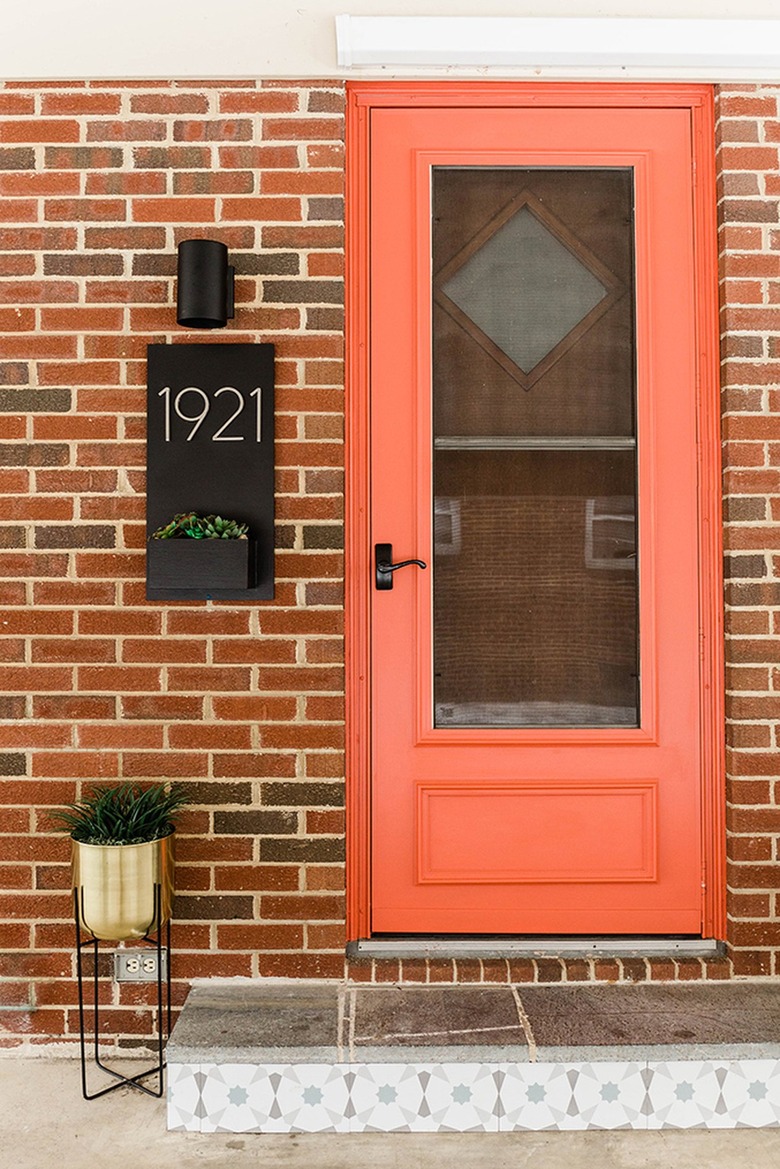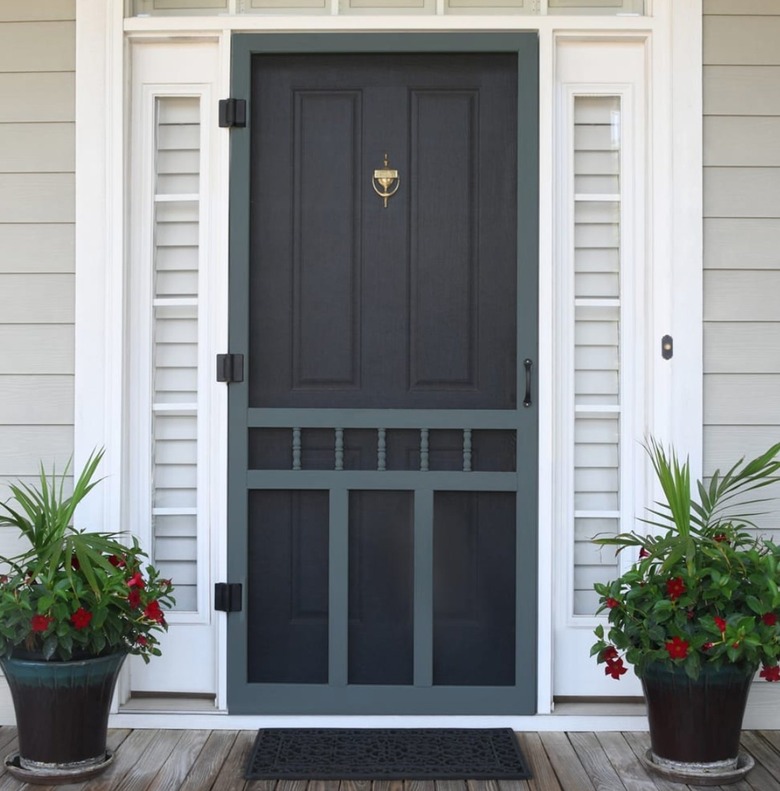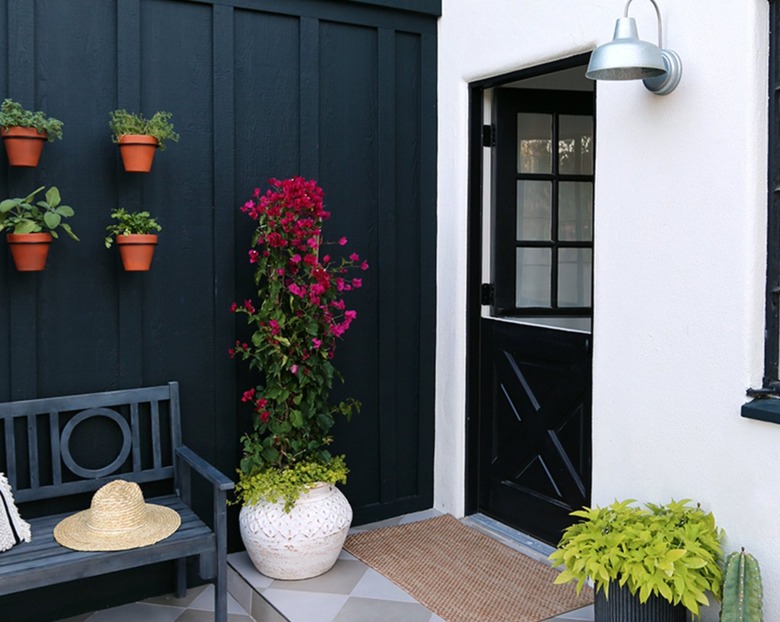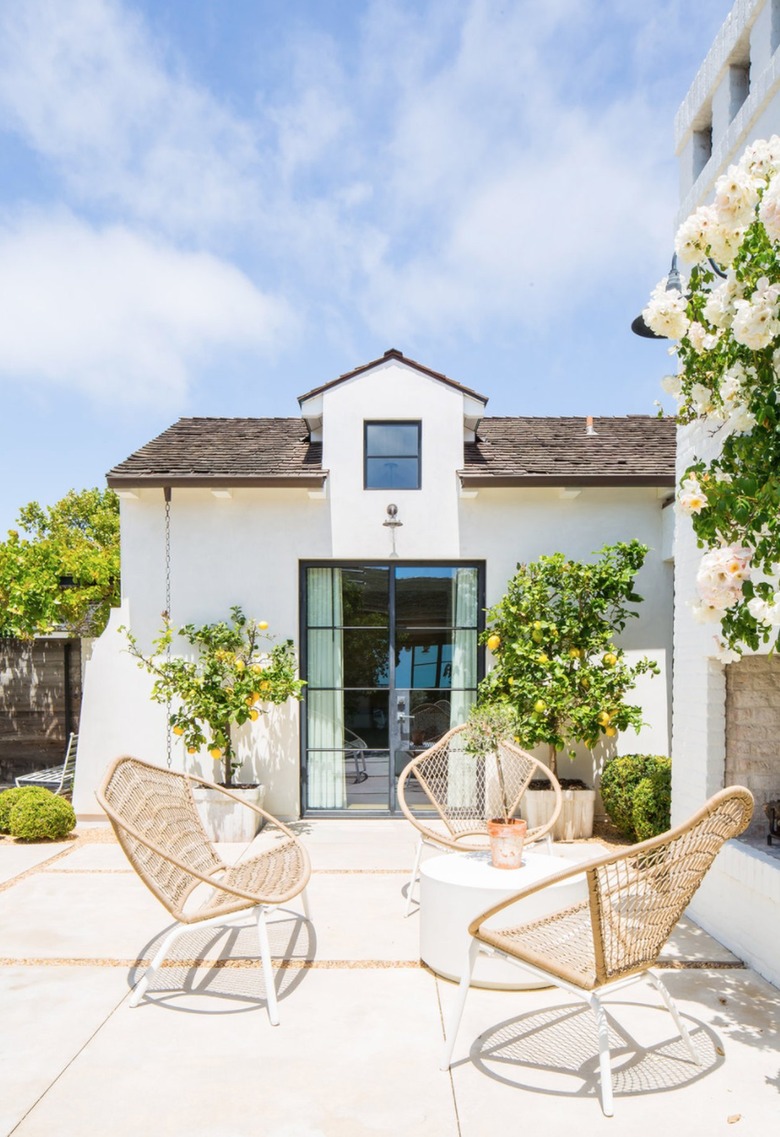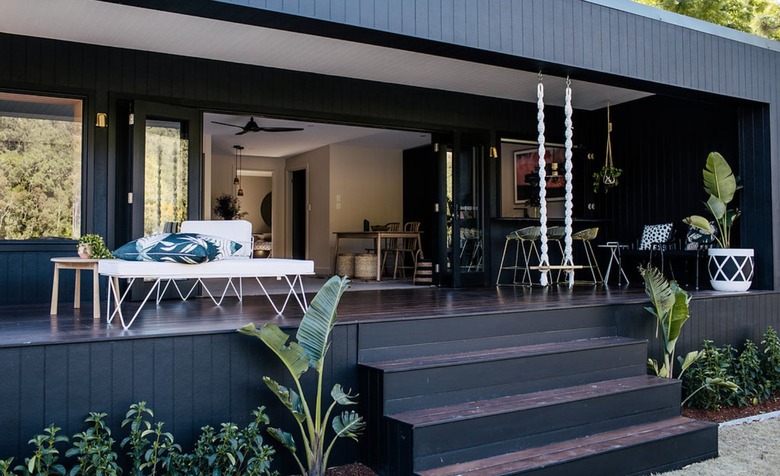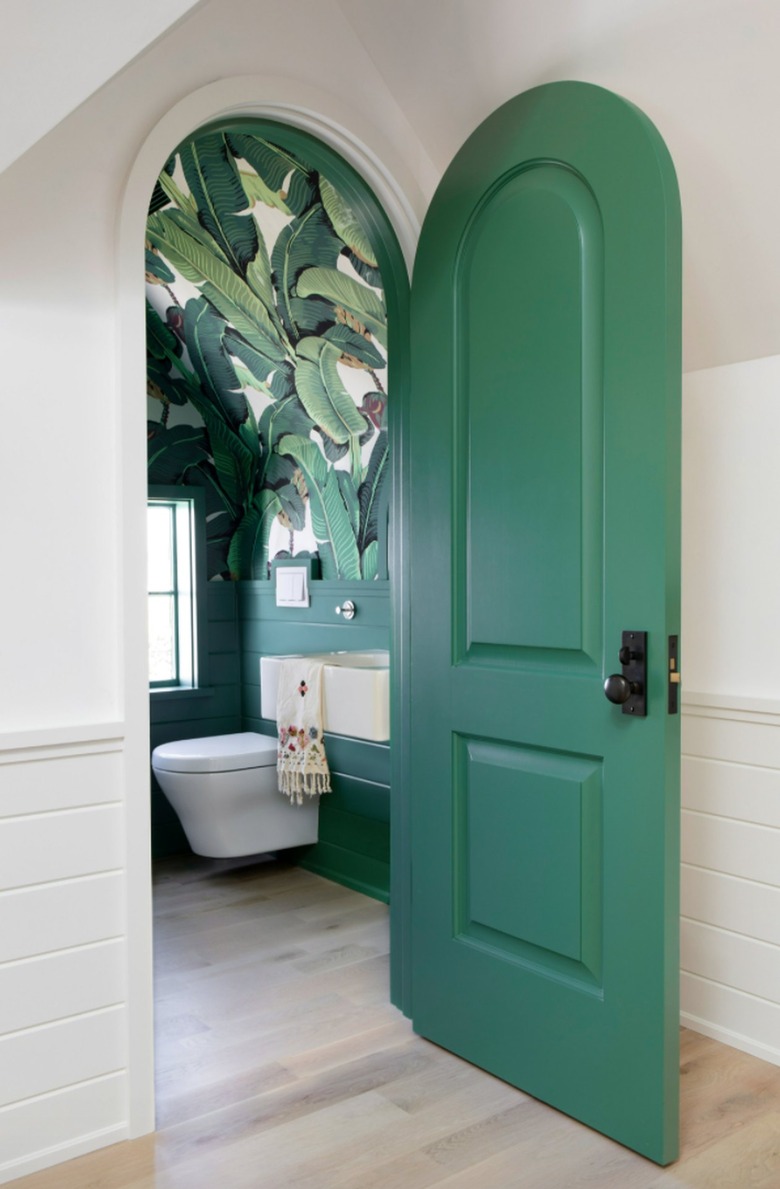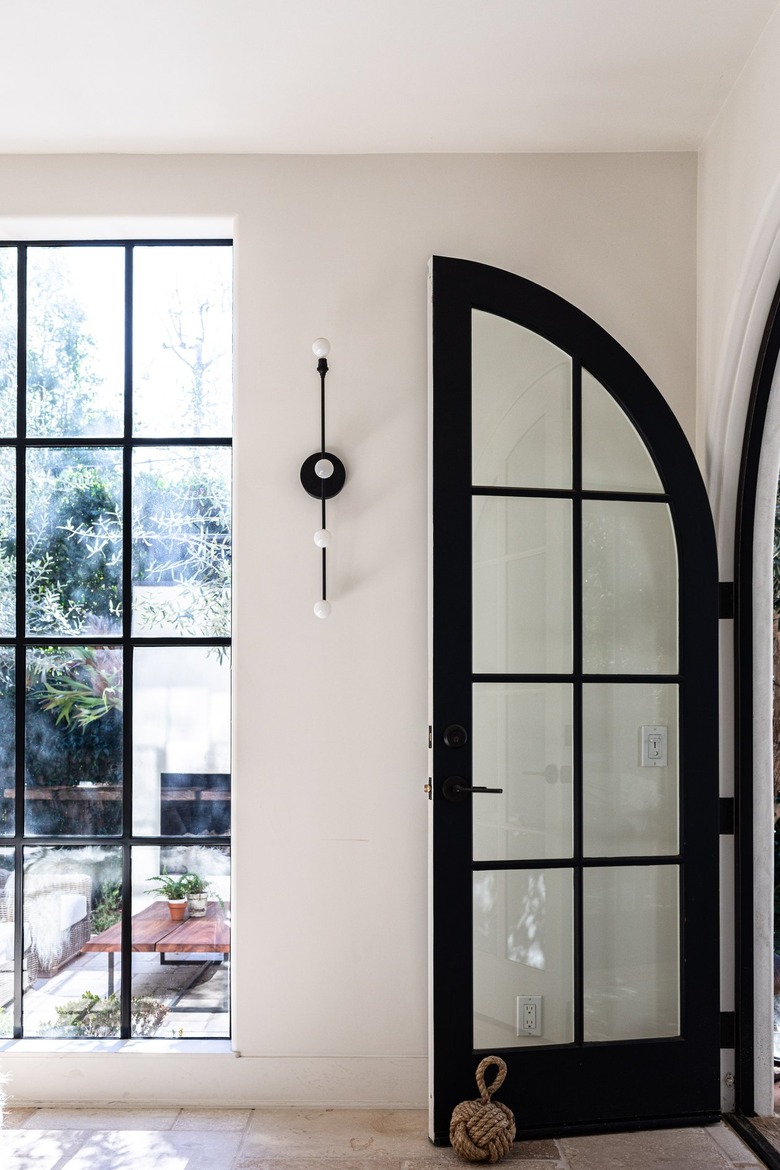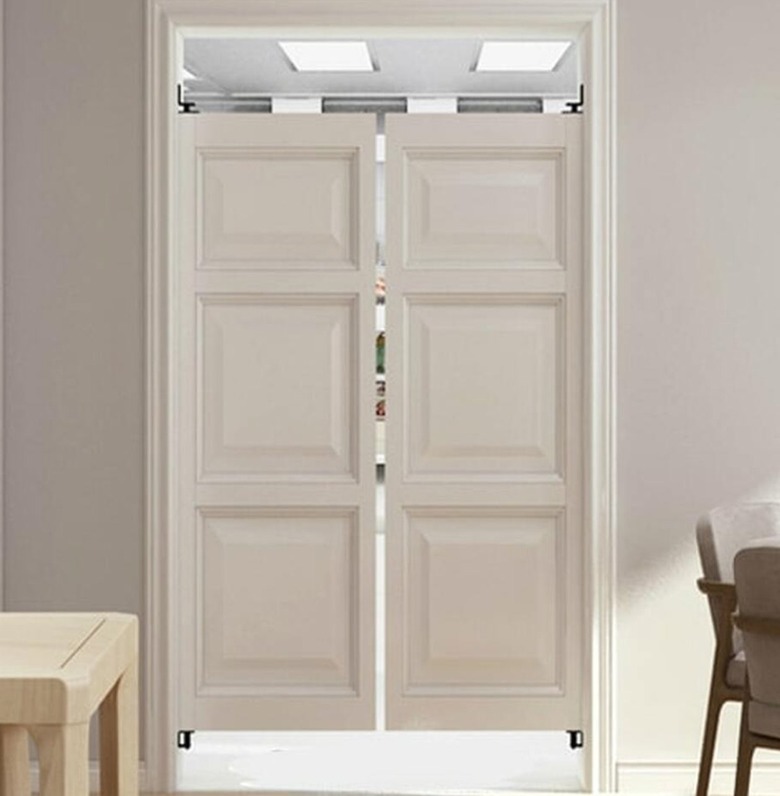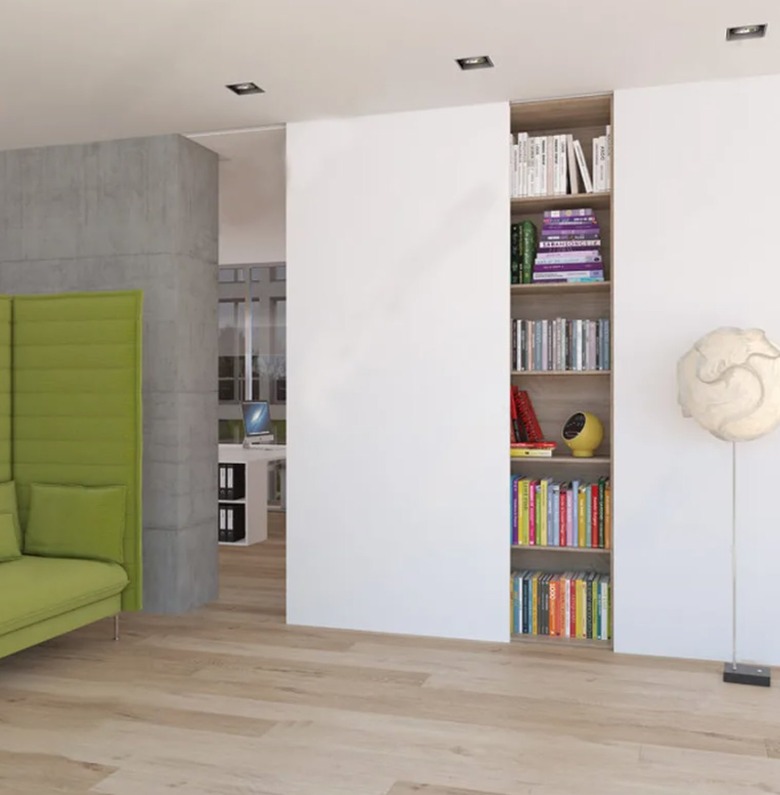18 Types Of Doors For Any Home And How To Decorate With Them
Are all doors created equal? When you think about it, they all serve a common purpose: to separate or connect spaces. Besides enhancing a particular design sensibility, doors can provide security, privacy, and protection from the elements. Plus, they can also help block out sound. However, there is a need to classify doors a bit, because some materials and opening mechanisms that are essential for exterior doors may not be needed for interior doors.
For instance, exterior facing doors should be constructed from materials that are able to withstand hot and cold temperatures as well as any moisture, like metal, wood, glass, or vinyl. They also need to be durable enough to keep what's inside your home safe and sound. Interior doors, on the other hand, can be made of lighter materials. For any door — interior or exterior — you also need to think about the layout of your home. For example, do you have enough space for French doors that swing open? Or will a pair of pocket doors be a better choice? Barn doors are also great space-savers, but will they look good with the rest of your home decor?
Besides functionality, doors are a great way to add architectural flair and curb appeal to your abode. There's even rich history attached to particular styles. This means, first and foremost, that you should never settle for a boring door. Ready to find your perfect match? We're breaking down 18 different kinds of doors, including where they work best in terms of functionality and aesthetics.
18 Different Types of Doors for Any Home
1. Standard Hinge Doors
Hinge doors are the most common style used in interior spaces. As the name suggests, they are installed with hinges so they can swing in or out. They are usually hollow-core doors, or made of a lighter-weight wood, and can be painted or stained to match the trim or walls. Hinge doors typically come in plain or paneled styles, like the classic design used in this bedroom by Heidi Caillier. To liven things up, try using contrasting shades of paint for a dramatic pop of color. And if you really want to make an impact, opt for an interesting doorknob.
2. Glass Sliding Doors
Just as hinge doors are the most common option for interiors, sliding glass doors are often used to connect an outdoor space like a patio or deck. The frames are generally metal, vinyl, or wood, and they don't require any space to swing open, which makes them an ideal solution for spaces that are on the smaller side. For bedrooms, sliding glass doors should have window treatments at the ready for privacy. While this particular type of door fits in perfectly with contemporary decor, it actually dates back as far as the first century. The version we know now with glass became popular during the pre-war era in the early 20th century. It's really quite amazing that something that looks so modern has been around for literally thousands of years.
3. Classic French Doors
French doors are a classic style that works great for both exterior and interiors. Their origins can be traced all the way back to Renaissance Italy in the 16th century. They initially became fashionable when people wanted their homes to feel more open. The glass doors allow for more natural light to flow inside, whereas before they came along, solid doors were used throughout. Technically any two-paneled door with glass that swings open is a French door, but they are constructed of lighter wood with glass panels that extend most of their length. As proven by this kitchen design by Heidi Caillier, their enduring charm makes them an excellent choice for almost any decor scheme, as there are many different variations to choose from. Additionally, they also make stylish dividers between interior spaces, such as the living room and dining area.
4. Barn Doors
If you'd like to save some space in your home, a barn door is a great alternative to a swing door. Inspired by doors found on actual barns, the look has evolved a lot over the years. Believe it or not, your decor style doesn't have to be farmhouse or rustic to use one — you can find them in minimalist and modern settings, too. They even come in glass. Whether a single panel, or a pair, barn-style doors hang from a track mounted on the ceiling or the wall, and are incredibly easy to slide open or closed. The unique design is a great way to add a focal point with a pop of texture and color to any room.
5. Pocket Doors
Driven by the demand for extra square footage, pocket doors started popping up in homes in England and the U.S. during the 1850s. You see them a lot with Victorian and Craftsman architecture — the door literally slides into the wall; or the pocket. It was a genius way to close off rooms without having to take up too much space. During the 1920s, pocket doors took a dip in popularity but started trending again in the post-war, midcentury modern era. They are often used for closets, utility rooms, home offices, and bathrooms, like this powder room by Truth & Co.
6. Pivot Doors
A door's opening mechanism can really elevate your home's curb appeal. Take, for example, a pivot door like the oversize pink number spotted on this charming townhouse by U.K.-based firm Nimtim. A pivot door turns on a vertical axis with the help of a pivot box located on the floor and at the top of the jamb rather than on hinges. It is a stunning addition whether installed at the front or the back of the house and will add tons of drama. Ideally, this type of exterior door would be one large panel in either a solid material or glass, resulting in a unique architectural feature.
7. Panel Doors
When a door is constructed from many panels, instead of a single piece of wood, it's referred to as a panel door. The core can be solid wood or it can be made up of wood and other materials to make it lighter. Oftentimes, this door style will feature raised or recessed squares and rectangles, and can even include glass inserts. Due to their durability, they are often used as exterior doors. You can hang a pair for a grand entrance or keep it simple with one door. It's a classic look that comes in a variety of styles to suit different aesthetics.
8. Slab Doors
If a door is not pre-hung, and doesn't have a hole for a knob, it's often referred to as a slab door. This particular style can be used for interiors and exteriors, and it works well with modern architecture since it usually comes with little to no embellishment. More and more often, slab doors purchased from big-box retailers aren't high-quality, so if you're using it for the front door, make sure you find one that is well-made from a solid material. As proven by this home's exterior, the minimal door style looks stunning flaunting nothing more than a natural wood stain.
9. Steel Doors
Steel doors are naturally strong, provide extra security, and are easy to maintain. And if that's not enough, the industrious material is one of the most weather-resistant options available. It probably goes without saying, but metal doors look spot-on in modern, minimalist, and, yes, industrial interiors. There aren't very many other door types that will make you feel more secure than steel doors, especially since they are usually installed with a steel frame, too.
10. Storm Doors
A lot of people ask what the purpose of a storm door is, and if you live in warmer/drier climates, they aren't really necessary. Storm doors are installed in front of exterior facing swing doors to add a layer of protection from rain, ice, and snow. They can also provide better energy efficiency by helping to seal off the entrance. Storm doors usually feature glass inserts to allow some sunlight in if you choose to leave your front door open, but there are countless other ways to personalize your home's entry. And bonus: locks can also be added for an extra bit of security.
11. Screen Doors
If you like the idea of leaving the front door open to let some fresh air in, but want to keep pests and airborne debris out, a screen door is a must. Whether in a sliding or swing style, screen doors have evolved a lot since their first inception. The first screens for windows and doors were made of cheesecloth, believe it or not. But now, they are constructed from metal, fiberglass, plastic wire, or other pieces of plastic stretched in a frame of wood, metal, or vinyl — there are even retractable versions.
12. Dutch Doors
Dutch doors, sometimes called a double-hung or half door, are literally split in half horizontally, allowing the top part to open while the bottom remains closed. There is a bolt you can use to secure the two halves together so it operates like a normal swing door. Why are they called Dutch? Originating in New England, the style was used in Dutch homes and the name stuck. They were, and still are, a practical solution to let fresh air and sunshine inside while keeping pests outside. They're also great in households with kids and pets, so you can keep an eye on them whether they're inside or out. And let's face it, Dutch doors are just super charming, especially when painted in a striking color, like this one belonging to Jenny Komenda from Juniper Home. They are available in solid styles or with glass inserts.
13. Crittall Doors
Crittall style, which was created over 160 years ago in the U.K., was initially used during the art deco and modernist movements in the mid-1920s and early '30s. The look refers to a glass-paneled door or window with a black steel or aluminum frame. They've seen a surge in popularity in recent years since they're a perfect choice for contemporary and industrial settings. We've even seen them work beautifully in traditional homes as well. Striking, durable, and surprisingly timeless, Crittall style doors are a great option for both interior and exterior spaces, as proven by this lovely patio design from Kelly Nutt.
14. Accordion Doors
Have a great view you want to enjoy 24/7? Or do you want to seamlessly connect the indoor and outdoor spaces? Although a bit of an investment ($700 to $1,000 per linear square footage), accordion or bi-fold doors would not only be a gorgeous addition to your home; they are great space-savers, too. Typically, they feature two or more panels that span a large opening and are hinged together. When they slide open, they usually fold or stack to one side. This space-saving solution gives homeowners the option to really open up their house when entertaining. And when closed, a wall of glass looks out onto picturesque views. Keep in mind that you may want to invest in extra insulation or tinted glass to make sure your doors are as energy-efficient as possible.
15. Arched Doors
Arched top entry doors are one of the oldest known styles. The Romans made extensive use of arches, and the shape was carried on during the medieval period as well, so it comes with a very rich history. The curved shape is a striking choice for a front entry but can also provide lots of architectural charm in an interior as well. The team over at Chango & Co. gave this bathroom a little extra flair with a green arched door, and we wholeheartedly approve. You may have to spend a little extra cash to redo the door frame, but we guarantee it's worth the splurge.
16. Double-Glazed Doors
While we discussed different styles of glass doors earlier, if you are installing one that faces outside, you'll want to invest in a double-glazed glass door. This means that there are two panes of glass that are separated by an argon gas-filled spacer that is hermetically sealed. The result provides insulation against heat loss/gain and it helps block out sound as well. Although double-glazed doors do help reduce energy bills, the glass panes are not easily replaced if the airtight seal is broken.
17. Swing Doors
Saloon or swing doors are any doors that due to their double-action hardware, literally swing open both ways and stop in the closed position after you pass through. They're a good option when you want to close off a kitchen, pantry, or even a laundry area from the rest of your house. Plus, the fact that you don't need to use a doorknob makes them easy to maneuver if you have your arms full.
18. Bypass Doors
Bypass doors are a great option for interiors where you want to close off particular areas — like an office or closet space — in your home from time to time. They are usually set in double or triple-sized openings where one panel can slide in front of, or bypass, the other. The panels are most often all the same size and should overlap a bit when closed. They are available in solid wood or metal, and can even come with a mirrored panel. A common misconception is that you need hardware on both the top and bottom of the doors in order to install them, but actually, only the top rack is essential.
